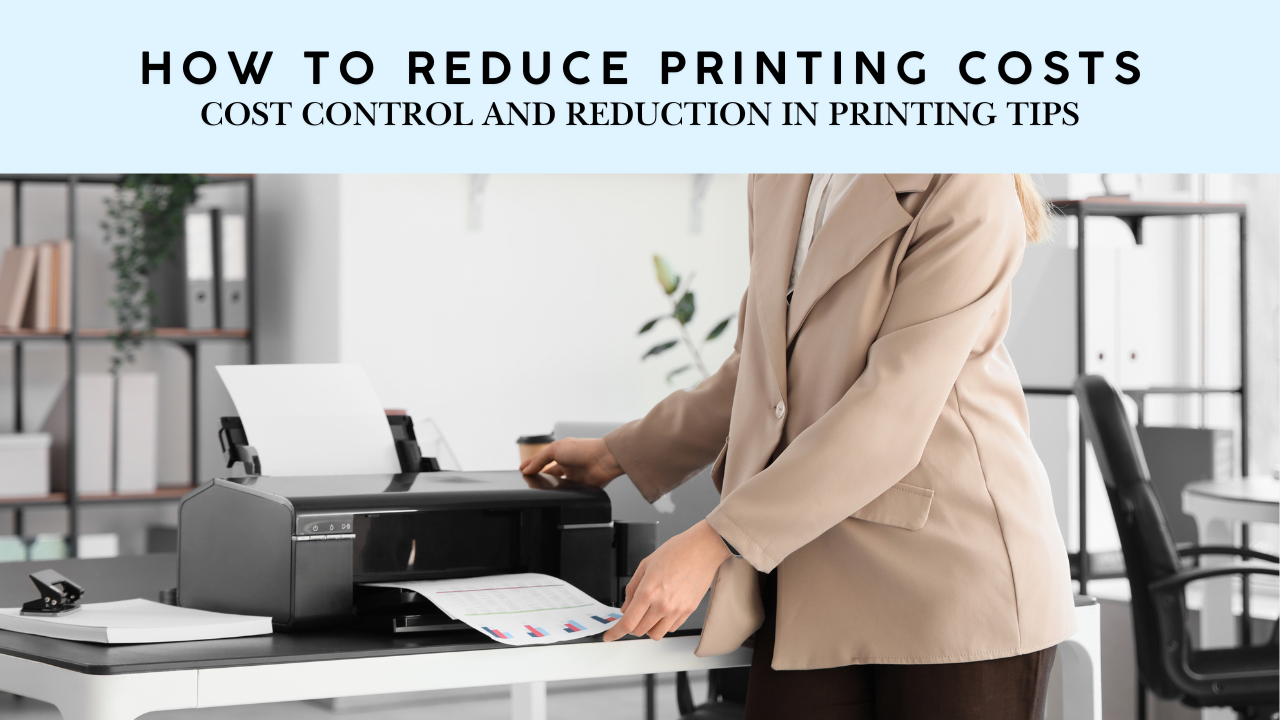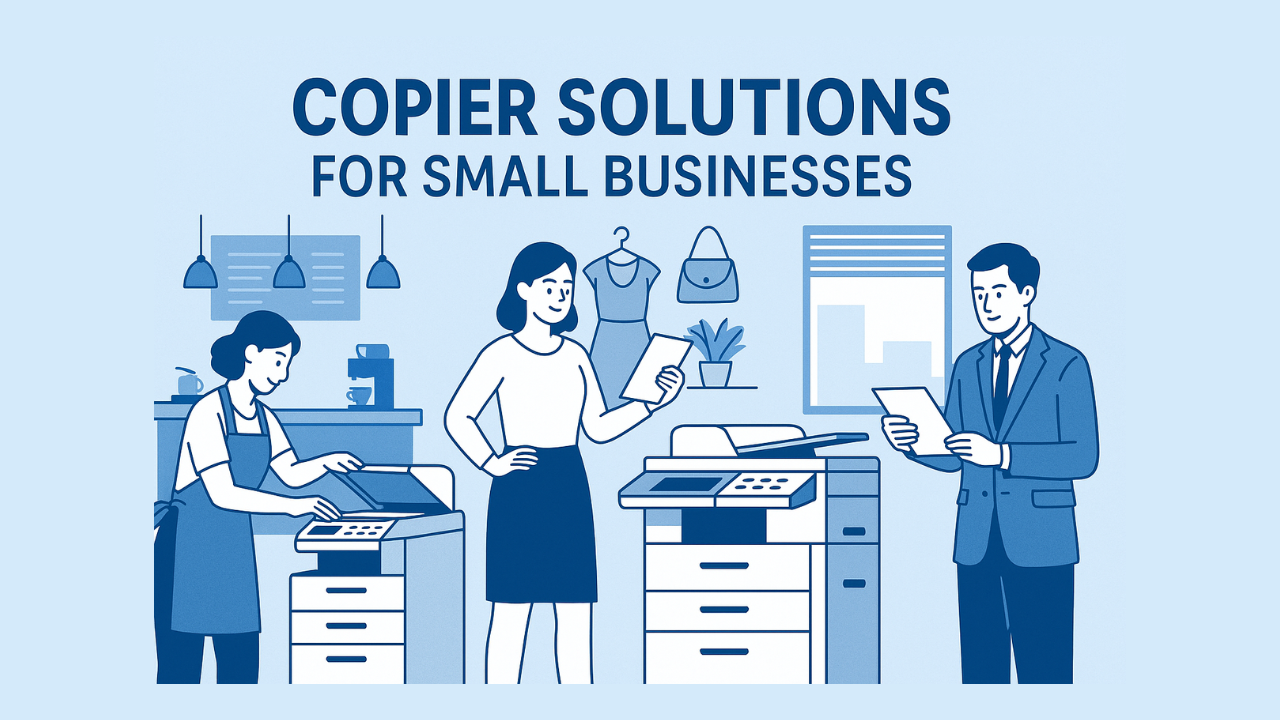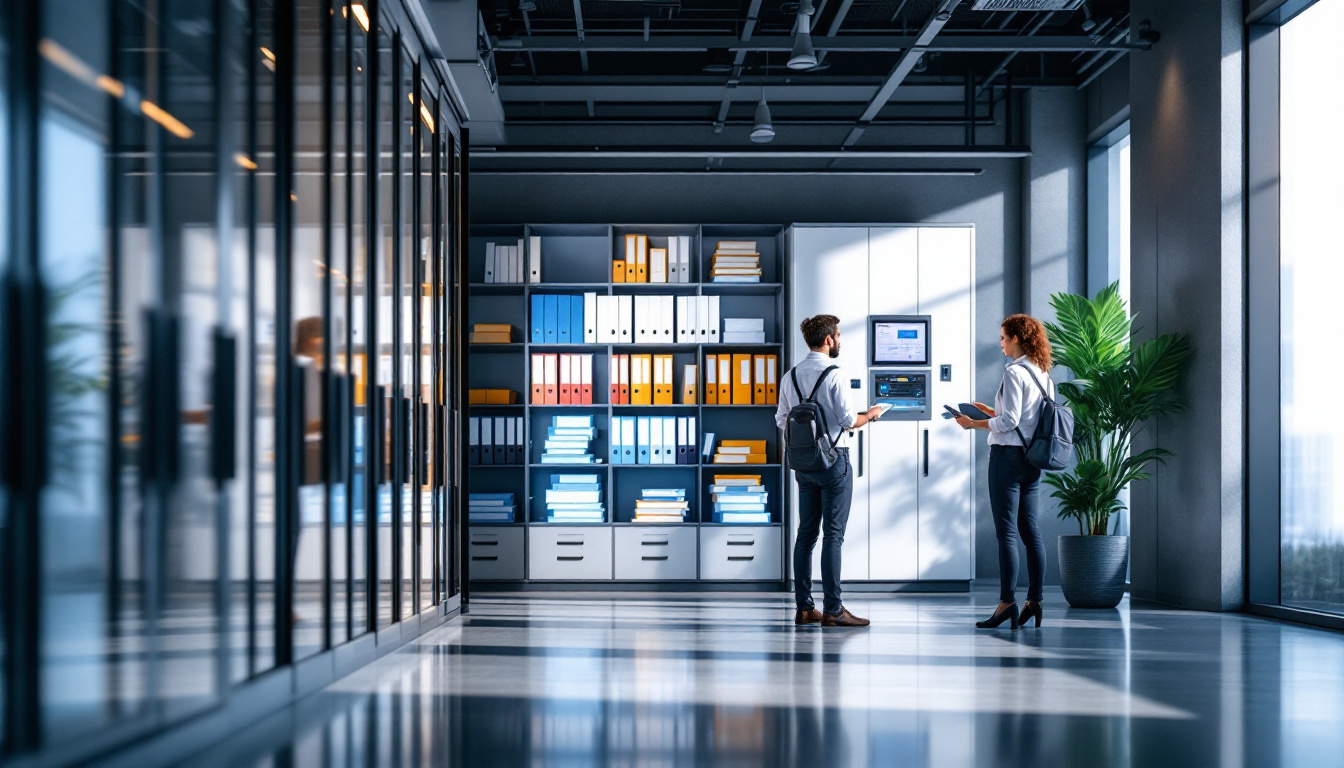Understanding the Environmental Footprint of Copier Packaging Materials
Copier packaging materials, essential for safeguarding equipment during transportation and storage, significantly contribute to environmental pollution and resource depletion. As the industry evolves, awareness of their ecological impacts has become crucial for stakeholders committed to sustainable practices. This article explores the various environmental effects caused by common copier packaging materials, examines alternatives that lessen ecological harm, and highlights strategies for implementing eco-friendly solutions across the life cycle of packaging.
Environmental Impacts of Traditional Copier Packaging Materials

What are the environmental impacts of packaging materials?
Packaging materials have a profound effect on the environment, influencing pollution levels, waste management, and climate change. Traditional packaging, especially plastics, contributes significantly to land, ocean, and air pollution.
One of the most pressing issues is the pollution from landfills and oceans. Plastic packaging, primarily single-use plastics, does not biodegrade. Instead, it persists in the environment for centuries, often breaking down into microplastics—tiny particles that infiltrate soil, waterways, and marine ecosystems. These microplastics contaminate the food chain, harming sealife, birds, and even humans. According to recent studies, about 8 million pieces of plastic waste enter our oceans daily, threatening over 59% of seabird species, all sea turtle species, and numerous fish. When plastics reach the ocean, they can cause ingestion, entanglement, and habitat destruction.
Microplastic contamination is a critical environmental concern. These particles can be ingested by marine animals and eventually enter the human food supply through seafood consumption. Microplastics are found not only in seawater but also in soils, rivers, and atmospheric dust. Their long-lasting presence and ability to absorb toxins make them particularly dangerous, entering wildlife and humans alike.
The production of plastic packaging, derived mainly from fossil fuels like coal and petroleum, is another major contributor to environmental degradation. Extracting and processing these non-renewable resources release greenhouse gases such as carbon dioxide (CO2) and methane, both of which trap heat in the atmosphere. The manufacturing phase is energy-intensive, emitting significant greenhouse gases that accelerate climate change.
Furthermore, plastics have long decomposition times. Depending on the type, plastics can last anywhere from hundreds of years to potentially a million years before breaking down into microplastics. This persistent presence means that every piece of plastic ever produced can still be in the environment, gradually fragmenting and distributing toxic residues.
Addressing these issues involves adopting alternative materials and design strategies. Bioplastics made from renewable resources like cornstarch and seaweed, recycled plastics, and biodegradable packaging are promising options. These materials can decompose more rapidly without releasing harmful residues, reducing the burden on landfills and oceans.
Efforts to improve recycling systems and waste management are crucial. Public awareness campaigns and consumer education can boost recycling rates and encourage responsible disposal. Additionally, industries work on innovative solutions such as seaweed-based plastics, compostable films, and reusable containers. These initiatives look to lower greenhouse gas emissions, decrease reliance on finite resources, and create a sustainable packaging ecosystem.
In summary, traditional packaging materials pose significant environmental challenges. Their contribution to pollution, microplastic contamination, greenhouse gas emissions during production, and long degradation times necessitate a shift toward more sustainable materials and practices. Embracing biodegradable, recyclable, and circular economy approaches can help mitigate these impacts and foster a healthier planet.
The Role of Plastic in Packaging and Its Ecological Consequences

What are the environmental impacts of packaging materials?
Packaging materials play a significant role in environmental pollution, particularly plastics that dominate the industry due to their durability and versatility. These materials often end up in landfills, oceans, and terrestrial ecosystems, causing widespread harm.
Plastic packaging, especially single-use types like bags, films, and containers, does not biodegrade. Instead, it can persist in the environment for centuries, slowly breaking down into microplastics—tiny plastic fragments that have entered soil, water bodies, and the food chain. Microplastics pose significant threats to marine life, wildlife, and human health, as they are ingested by a wide range of organisms.
The environmental impact extends beyond persistent waste. The extraction of raw materials for plastic production, which relies heavily on fossil fuels like petroleum and coal, is energy-intensive and contributes substantially to greenhouse gas emissions. During manufacturing, plastics emit pollutants such as CO2 and methane, further driving climate change.
In oceans, approximately eight million pieces of plastic waste enter waters daily, threatening over 59% of seabirds, all sea turtle species, and a large share of fish unloading in seafood markets. Plastics not only harm marine organisms through ingestion and entanglement but also degrade into microplastics, which infiltrate the marine food web.
On land, plastic waste can litter ecosystems, contaminate soils, and impair plant and animal health. Incineration of plastic releases toxic chemicals, while landfilling results in persistent pollution that can leach chemicals into the environment over decades.
Efforts to reduce these impacts focus on developing sustainable packaging alternatives. Bioplastics, which include biotechnologically produced polymers like polylactic acid (PLA) derived from renewable resources such as cornstarch, are increasingly popular. Recycled materials—such as plastics and paper—reduce the need for virgin resources and decrease environmental footprints.
Biodegradable and compostable packaging options, made from bio-based sources like seaweed or mushroom mycelium, decompose under specific conditions without releasing toxins. These innovations are supported by certifications such as BPI and TÜV Austria, ensuring quality and environmental safety.
Adopting eco-friendly options involves designing packaging to use less material, enhancing recycling processes, and educating consumers about responsible disposal. Technological advances, including seaweed-based plastics and new compostable formulations, hold promise for reducing environmental pollution.
Consumer behavior and policy support are also vital. Implementing regulations, providing incentives like tax breaks, and establishing industry standards can accelerate the shift toward sustainable packaging.
How do different packaging materials compare in environmental impact?
| Material Type | Recyclability | Biodegradability | Energy Use in Production | Impact on Ecosystems | Environmental Certifications |
|---|---|---|---|---|---|
| Virgin Plastic (PET, LDPE, etc.) | Limited (often non-recyclable curbside) | Not biodegradable | High (fossil fuel-based) | Contributes to microplastics, marine debris | GRS (Recycled Standard) |
| Recycled Plastic | Recyclable at drop-off | Not biodegradable | Less than virgin plastic | Reduces waste, microplastic pollution | GRS, industry-specific certifications |
| Bioplastics (PLA, PHA) | Generally recyclable, some compostable | Yes, in industrial composting | Lower than traditional plastics | Potentially lower impact, needs proper disposal | BPI, TÜV Austria |
| Recycled Paper | Widely recyclable | Biodegradable | Moderate | Prevents deforestation, biodegradable | FSC certification |
| Compostable Films (seaweed, mushroom-based) | Compostable | Yes | Low in production | Decomposes into non-toxic components | BPI, TÜV Austria |
| Glass | Recyclable multiple times | Not biodegradable | High in production | Reusable, but heavier, energy-intensive to transport | None required, highly recyclable |
| Metal (steel, aluminum) | Fully recyclable | Not biodegradable | Energy-intensive in extraction and processing | Recyclable, impacts during mining | LEED, other industry standards |
Most of these materials have different environmental profiles, influenced by factors like recyclability, biodegradability, and energy consumption during manufacturing. Overall, using recycled or bio-based materials can significantly reduce harm.
What solutions exist to lessen the environmental impact of packaging?
Innovative design, smarter material choices, and improved waste management are essential. Designing packaging to be lighter and using less material decreases transportation emissions. Choosing sustainable raw materials, such as recycled paper and bioplastics, lessens dependence on finite resources.
Advancements such as compostable packaging and seaweed-based plastics are emerging. For example, mushroom packaging uses mycelium for biodegradable containers, and seaweed plastics sequester carbon dioxide as they grow. These options are gaining certifications and consumer acceptance.
Recycling and reuse also remain critical. Efforts include developing recycling technologies, establishing proper collection systems, and educating consumers on disposal practices. For instance, recyclable plastic films are processed at specific drop-off points, and composting facilities enable biodegradable packaging to break down safely.
Policy measures like bans on single-use plastics, financial incentives, and industry standards can help align market practices with sustainability goals. Leading brands like Patagonia and Method have adopted reusable containers and recycled packaging, setting industry examples.
How can long-term benefits be achieved through sustainable packaging?
Sustainable packaging reduces environmental pollution, conserving ecosystems and reducing climate change impacts. For companies, it enhances brand image, meets consumer demand for eco-friendly products, and can lead to cost savings through material efficiency.
Supporting a circular economy—where materials are continually reused and recycled—minimizes waste and resource depletion. Technological innovations, coupled with consumer education and policy support, create a framework for more responsible packaging practices.
In conclusion, by adopting sustainable materials, improving manufacturing efficiency, and promoting responsible disposal, the packaging industry can significantly mitigate its environmental footprint while meeting global needs for safe and efficient packaging solutions.
Exploring Sustainable and Eco-friendly Packaging Alternatives

What are sustainable and eco-friendly packaging options?
Sustainable packaging serves as a crucial strategy in reducing environmental pollution caused by traditional materials like plastics, paper, and metals. Among the most promising alternatives are biodegradable plastics, recycled paper, and materials produced from renewable sources such as bamboo or seaweed.
Biodegradable plastics, like polylactic acid (PLA), are derived from plant-based materials like corn starch or sugarcane. These materials are designed to break down in composting conditions within a few weeks, leaving no toxic residues. For instance, innovations involving seaweed-based packaging and mushroom mycelium are rapidly emerging, offering natural, carbon-sequestering options that decompose naturally.
Recycled paper and metals also play a vital role in sustainability. Recycled paper is made from post-consumer waste and is certified by organizations like FSC, helping to prevent deforestation. Metal options, such as steel and aluminum, are fully recyclable and can be used repeatedly without degrading in quality, significantly reducing waste.
Reusability extends the lifecycle of packaging, which lessens the need for virgin raw materials and decreases waste overall. Bulk containers, refillable bottles, and modular packaging systems are common examples that support reuse.
Innovative bio-based materials like seaweed and bagasse (derived from sugarcane processing) are gaining traction due to their renewable nature and minimal environmental impact. Bagasse-based packaging is particularly notable for its ability to decompose quickly and serve as a compostable alternative.
Supporting the shift towards eco-friendly packaging involves choosing products with minimal, recyclable, or compostable materials. Companies such as Reel Paper already offer bamboo and recycled paper options in packaging free from plastics. Consumer choices—favoring bulk purchases, reusable containers, and zero-waste shops—amplify the demand for sustainable solutions.
Additionally, regulations and certifications are driving the industry toward greener practices. Certifications like the Global Recycled Standard (GRS), BPI, TÜV Austria, and ABA ensure that biodegradable and compostable materials meet high environmental standards.
Implementing sustainable packaging is not solely a matter of materials but also of design and supply chain management. Reducing material use through innovative design, improving manufacturing efficiency, and investing in renewable energy sources are effective measures to lower the carbon footprint.
In conclusion, eco-friendly packaging encompasses a range of options—from bio-based plastics and recycled materials to reusable systems—that collectively contribute to a healthier planet. As consumer awareness grows and industry practices evolve, the adoption of these alternatives promises a significant reduction in environmental impact.
Types of Materials and Their Environmental Effects
What are the different types of packaging materials and their environmental effects?
Packaging materials come in various forms, including plastics, paper, metals, glass, and biodegradable options. Each material has unique properties that influence its environmental footprint.
Plastics are the most widely used in packaging due to their durability, flexibility, and low cost. However, they are a major contributor to environmental pollution. Plastics, especially single-use types, do not biodegrade and can persist in ecosystems for centuries. Over time, plastic degrades into microplastics, which contaminate soils and waterways, entering the food chain and harming marine and terrestrial life. Although recycling plastics and developing bioplastics like polylactic acid (PLA) can help reduce impact, the overall environmental footprint remains significant.
Paper and cardboard are popular for their biodegradability and recyclability. They are sourced from renewable forests but require considerable water and energy during production. Improper disposal leads to litter and waste in landfills, although they break down faster than plastics. Certified recycled paper reduces the need for virgin fiber and helps prevent deforestation. Despite being eco-friendly in disposal, their high resource consumption during manufacturing presents environmental challenges.
Metals, such as aluminum and steel, are highly recyclable and often used for food cans and containers. Recycling metals saves energy compared to primary production, yet their extraction and manufacturing are energy-intensive processes that generate greenhouse gases and may impact land and water resources.
Glass is inert, fully recyclable, and can be reused multiple times without degradation in quality. Its production, however, is energy-heavy, and the weight of glass packaging increases transportation emissions. Contamination and breakage further complicate recycling efforts, although glass’s durability makes it an environmentally favorable choice when properly managed.
** biodegradable materials** and innovative options like mushroom mycelium packaging, bagasse (sugarcane waste), seaweed, and bio-based plastics are emerging as sustainable solutions. These materials can decompose naturally under industrial composting conditions, leaving no toxic residues. However, their adoption is sometimes limited by higher costs, scalability challenges, or specific disposal requirements.
Environmental benefits and challenges of each material
| Material | Benefits | Challenges | Environmental Impact | Recycling & Disposal |
|---|---|---|---|---|
| Plastics | Lightweight, versatile, cost-effective | Persistent waste, microplastics | High, long-lasting in ecosystems | Recycling possible but limited for some types |
| Paper & Cardboard | Biodegradable, recyclable | Resource-intensive, moisture sensitivity | Moderate, reduces deforestation with recycled content | Widely recyclable, compostable |
| Metals | Recyclable multiple times, durable | Energy-intensive extraction and processing | Lower with recycling, but high initial impact | Highly recyclable, energy savings |
| Glass | Reusable, inert, recyclable | Heavy, energy-intensive production | Generally low impact when recycled | Fully recyclable, reusable |
| Biodegradable & Bio-based | Breaks down naturally, renewable | Costly, variable decomposition rates | Significantly lower if managed properly | Requires industrial composting |
Innovations in eco-friendly materials
Research and development in sustainable packaging focus on alternative materials that reduce environmental impact. Innovations include mushroom packaging made from mycelium, which is biodegradable and can sequester carbon during growth. Seaweed-based plastics and bagasse from sugarcane are other promising options, providing biodegradable and compostable solutions.
Bioplastics like PLA are made from renewable carbohydrate sources but face limitations in marine environments where they degrade poorly. Blending bio-based plastics with agricultural waste creates low-cost, environmentally friendly composites suitable for food packaging.
Emerging materials typically require new manufacturing processes, regulatory support, and consumer acceptance but hold the potential for a circular economy—where materials are continually reused, repaired, and recycled.
Benefits of packaging that supports a circular economy
Implementing circular economy principles in packaging involves designing for reuse, recycling, and minimal resource extraction. Benefits include significant reductions in waste sent to landfills, decreased demand for virgin raw materials, and lower greenhouse gas emissions.
Recyclable and reusable packaging options, such as glass and metals, extend the life cycle of products and facilitate easy recycling. Innovations like biodegradable films and compostable options contribute to closing the resource loop.
Furthermore, supporting sustainable packaging aligns with consumer preferences for environmentally responsible products. Brands adopting these practices can enhance reputation, meet regulatory requirements, and potentially benefit financially through incentives and cost reductions.
As the industry advances, integrating eco-friendly materials and circular economy principles becomes essential to address the pressing environmental challenges associated with packaging waste.
Lifecycle Analysis (LCA): Assessing Packaging Impact
How can lifecycle analysis be used to evaluate the environmental impact of packaging?
Lifecycle analysis (LCA) is a comprehensive method that evaluates the environmental effects of packaging materials throughout their entire lifespan. It begins with raw material extraction—such as harvesting trees for paper or mining fossil fuels for plastics—and extends through manufacturing, transportation, usage, and finally disposal or recycling.
This process involves collecting detailed data on the inputs at each stage, including energy consumption, water use, and resource extraction. It quantifies the impacts across various categories such as greenhouse gas emissions, water pollution, and resource depletion.
LCA helps identify stages where the environmental footprint is highest, known as hotspots. For example, it might highlight that manufacturing or transportation contributes disproportionately to greenhouse gases, guiding targeted improvements.
Additionally, LCA allows comparison between different packaging options. By analyzing trade-offs—say, between lightweight plastics versus heavier recycled paper—it supports industry and policymakers in selecting more sustainable materials and designs.
This assessment also enhances transparency, helping companies meet regulatory requirements and communicate their environmental efforts to consumers. Ultimately, LCA promotes sustainability by guiding the development of packaging solutions that minimize ecological impacts while maintaining functionality.
Evaluating raw material extraction, manufacturing, transportation, and disposal
The environmental footprint begins with raw material extraction, which often involves energy-intensive processes like mining and deforestation. Manufacturing includes steps such as molding, printing, and assembly, all consuming significant energy often derived from fossil fuels. Transportation further contributes to emissions due to the movement of raw materials and finished products, especially over long distances.
Disposal or recycling stages also have substantial impacts. Landfilling plastics can lead to persistent microplastics, while incineration releases toxic emissions. Recycling reduces demand for virgin resources but involves processing that can be environmentally taxing.
This full cycle assessment emphasizes the importance of optimizing each stage to reduce overall environmental impacts.
Identifying environmental hotspots within the lifecycle
LCA reveals critical points where interventions can yield the most benefit. For instance, raw material extraction may represent over 68% of total impacts, suggesting that reducing resource use or switching to renewable sources can be effective strategies.
Manufacturing and transportation are also areas of concern, especially for materials like virgin plastics and glass, which require high energy inputs. End-of-life management—whether through recycling or composting—can significantly influence pollution levels and resource conservation.
Pinpointing these hotspots allows stakeholders to prioritize sustainable practices, such as designing lightweight packaging, increasing recycling rates, or adopting bio-based materials.
Trade-offs between different materials
Different packaging materials offer varied environmental trade-offs.
| Material Type | Energy Use During Production | Recyclability | Biodegradability | Environmental Concerns |
|---|---|---|---|---|
| Virgin Plastic | High | Limited in curbside recycling | No | Persistent microplastics, fossil fuel use |
| Recycled Plastic | Lower than virgin | Recyclable at designated sites | No | Processing impacts |
| Bioplastics (e.g., PLA) | Lower, but complex | Usually compostable | Yes in industrial composting | Land use for crops, feedstock resource competition |
| Paper & Cardboard | Moderate | Widely recyclable | Yes | Water and energy consumption, deforestation risks |
| Glass | High energy in production | Fully recyclable | No | Heavier weight increases transportation impact |
| Metals (e.g., aluminum) | Variable | Recyclable | No | Mining impacts |
Choosing the appropriate material involves balancing these trade-offs, aiming for options that minimize lifecycle impacts.
Guiding sustainable packaging design
Insights from lifecycle analysis encourage innovative design strategies. For example, reducing material thickness, using biodegradable or recycled content, and designing for easier recycling can improve environmental performance.
Designing packaging to be lightweight reduces transportation emissions, while using materials like recycled paper or bioplastics lessens resource extraction impacts.
Emerging technologies, such as edible packaging or mushroom-based molds, offer promising alternatives that sequester carbon during growth.
Policy incentives and standards, supported by industry collaboration and consumer education, further promote sustainable designs. Regular LCAs can monitor improvements over time, ensuring continuous environmental performance enhancement.
In conclusion, lifecycle analysis is a vital tool for evaluating, comparing, and improving the environmental impact of packaging. It guides decision-makers to adopt practices that foster sustainability throughout the entire lifecycle.
Strategies to Reduce Packaging Environmental Impact

What strategies can reduce the environmental harm caused by packaging materials?
Addressing the environmental footprint of packaging requires a broad and integrated approach. One of the most effective methods is designing packaging to be recyclable and reusable. This involves creating versatile packaging options such as glass jars that can serve multiple purposes or durable polybags that can be used repeatedly, drastically reducing single-use waste.
Lightweighting and right-sizing are also crucial. By reducing the weight and volume of packaging, companies can cut down on the energy required for manufacturing, transportation, and storage. This not only minimizes resource consumption but also reduces greenhouse gas emissions during logistics.
The selection of sustainable materials plays a vital role. Bioplastics like polylactic acid (PLA) derived from renewable resources, along with biodegradable polymers made from options such as corn starch, seaweed, or mushroom mycelium, help lower pollution and decrease reliance on finite fossil fuels. These materials are often certified by environmental standards like BPI or TÜV Austria, ensuring their eco-friendly credentials.
Improving waste management and recycling infrastructure is essential for maximizing the benefits of sustainable design. This includes expanding collection and recycling facilities for plastics, paper, and metals, and ensuring they are accessible and efficient. Conditions that facilitate sorting and processing, along with clear labeling, enhance the recycling rate and prevent contamination.
Consumer education and stakeholder engagement bolster these efforts. Informing consumers about proper disposal, encouraging the use of reusable products, and fostering partnerships across manufacturers, waste processors, policymakers, and retailers are critical. Such collaborations promote the adoption of sustainability practices and help develop standards and certifications that ensure transparency and product integrity.
Collectively, these strategies synergize toward a circular economy—reducing waste, conserving resources, and minimizing environmental pollution caused by packaging materials. As industry leaders and consumers work together, embracing innovative design, sustainable raw materials, and responsible disposal practices, the journey toward a resilient, eco-friendly packaging landscape becomes increasingly achievable.
The Cultural and Regulatory Dimensions of Sustainable Packaging

What are the benefits of using sustainable packaging alternatives?
Adopting sustainable packaging options yields multiple positive impacts for the environment and businesses alike. These alternatives often include biodegradable, recyclable, and reusable materials that significantly decrease pollutant emissions. For instance, biodegradable films made from plant-based sources like corn starch or seaweed can break down naturally without leaving harmful residues, reducing landfill burden.
Recyclable materials, such as recycled paper and metals like aluminum and steel, encourage a circular economy, where waste is transformed into valuable resources. This approach decreases reliance on virgin raw materials, conserving finite resources like fossil fuels and forested land. Reusability also plays a crucial role, with innovations like reusable vacuum-insulated panels or reusable containers helping cut down on single-use waste.
From an environmental perspective, these practices significantly lower the carbon footprint associated with production, transportation, and disposal. For example, producing recycled paper consumes less energy and water compared to virgin paper, and lightweight packaging reduces transportation emissions.
Economically, sustainable packaging can result in cost savings over the long term. Reduced material usage, lower waste management expenses, and minimized regulatory penalties contribute to financial benefits. Companies also gain a competitive edge by aligning with consumer demand for environmentally responsible products. A positive brand image fostered through eco-friendly practices can attract environmentally conscious customers, enhancing market share.
Furthermore, governments and regulatory bodies increasingly promote sustainability through policies, incentives, and standards. Industry certifications and global initiatives support businesses' efforts to adopt green packaging, ensuring transparency and trust. Overall, the shift towards sustainable packaging supports ecological balance and helps mitigate the global crisis of pollution, climate change, and resource depletion.
How do consumer preferences influence sustainable packaging?
Recent surveys indicate that over 70% of consumers favor products packaged with environmentally friendly materials. This trend reflects rising awareness about plastic pollution, microplastics, and ecological health. Consumers are increasingly scrutinizing product labels and choosing brands committed to sustainability.
This shift in preferences prompts companies to innovate with sustainable designs, such as using biodegradable films, reducing packaging volume, or implementing refillable systems. Transparent communication about eco-friendly practices further strengthens consumer trust. Businesses that effectively align their packaging with these values can not only improve brand loyalty but also fulfill corporate social responsibility goals.
What role do government policies and incentives play?
Government intervention is vital in shaping sustainable packaging practices. Many countries have introduced policies like plastic bans, recycling mandates, and standards for biodegradable and compostable materials.
For example, Canada adopted the Ocean Plastics Charter and a national plastic ban on six single-use items to curb plastic waste entering waterways. Sweden’s robust recycling system, which recycles over 60% of packaging waste, exemplifies effective policy-driven waste management.
Incentives such as tax breaks, subsidies for recycled and bio-based materials, or funding for research and development encourage companies to invest in sustainable packaging technology. Industry standards and certification programs like the Global Recycled Standard (GRS), FSC for recycled paper, and BPI for compostable films help maintain quality and transparency.
How do industry standards and certifications support sustainable packaging?
Standards and certifications serve as benchmarks for sustainability practices within the packaging industry. They assist consumers and stakeholders in identifying genuinely environmentally friendly products and manufacturing processes.
For instance, certification labels such as GRS guarantee that recycled plastic products meet rigorous environmental and social standards. FSC certification ensures responsible sourcing of recycled paper, promoting conservation and social responsibility.
These programs also motivate manufacturers to upgrade their processes, with compliance often linked to market access and branding advantages. They foster industry-wide best practices and transparency, which are essential in building consumer trust and advancing global sustainability goals.
What are the global efforts to combat plastic pollution?
International initiatives like the Ocean Plastics Charter exemplify collaborative efforts to reduce plastic waste on a planetary scale. Launched by countries committed to ending plastic pollution, such programs aim to promote sustainable manufacturing, improve waste management, and foster innovation.
Adherence to such agreements supports global targets, such as increasing recycling rates, reducing single-use plastics, and developing biodegradable alternatives. These efforts complement national policies and encourage cross-border cooperation.
| Aspect | Initiative/Program | Key Focus | Impact |
|---|---|---|---|
| International | Ocean Plastics Charter | Reduce ocean plastic pollution | Promote responsible production and recycling |
| Certification | GRS | Verify recycled plastic content | Increase consumer trust |
| Policy | Canada's plastic ban | Restrict single-use plastics | Decrease waste in landfills and oceans |
Combating plastic pollution requires a multifaceted approach involving technological innovation, regulatory support, consumer engagement, and industry commitment. Sustainable packaging is central to these efforts, offering tangible solutions aligned with environmental and economic sustainability.
Pathways to a Sustainable Future for Copier Packaging
In summary, addressing the environmental impact of copier packaging materials requires a comprehensive approach that integrates sustainable material choices, lifecycle assessments, innovative design, and consumer engagement. Transitioning to biodegradable, recycled, and reusable packaging options, supported by effective waste management and policy frameworks, can substantially reduce pollution, lower resource consumption, and mitigate climate change. The industry’s shift towards eco-conscious practices not only benefits the planet but also enhances brand reputation and aligns with growing consumer demand for sustainability. Future advancements and collaborative efforts are essential to further refine eco-friendly packaging solutions, ensuring that the lifecycle of copier packaging contributes positively to ecological preservation and resource conservation.
References
- Environmental Impact of Packaging: Challenges and Eco-Friendly ...
- Analysing the packaging industry's environmental impact
- Understanding the Environmental Impact of Different Packaging ...
- Characterizing the environmental impact of packaging materials for ...
- The Environmental Impact of Food Packaging - FoodPrint
- [PDF] ENVIRONMENTAL IMPACTS OF PACKAGING - SRUC
- Our Environmentally Impact | Printers & Copiers | Ink Cartridges
- The Impact Of Packaging Materials On The Environment



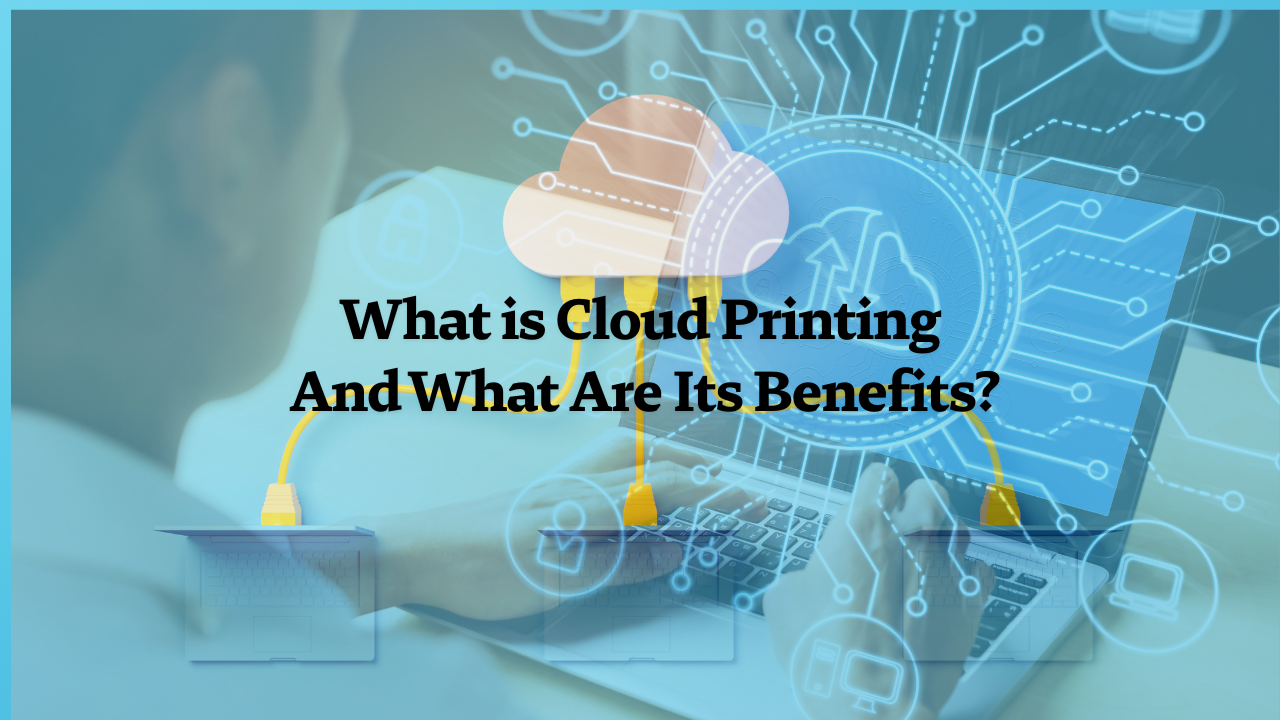
.png)
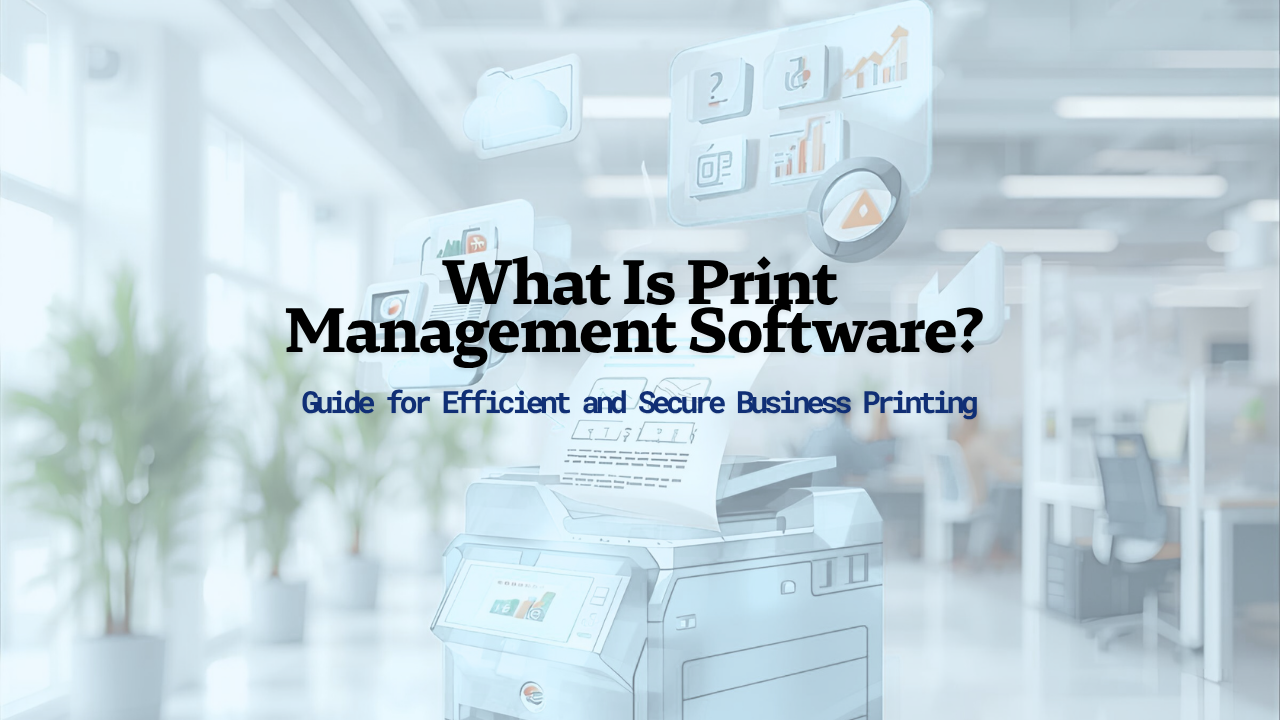
.png)
